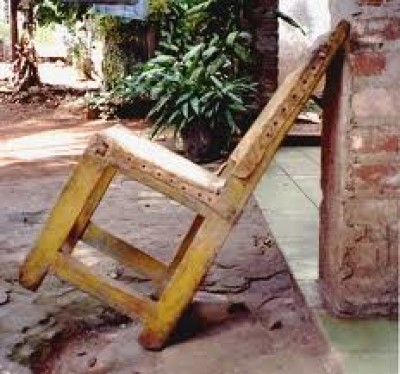The Cuban stool: evocation of the guajiras roots.
##plugins.themes.bootstrap3.article.main##
Abstract
The stool does not come from Cuba but from Spain, but over time it became the piece of furniture par excellence for the most humble classes of the Cuban fields. This is a very sturdy, high-back square-style seat. The main materials used in the stools are hard or semi-hard wood and leather, which can be goat or beef, nailed to the wood with large head tacks. Normally the leather in this furniture is not woven or painted and on many occasions it preserves the animal's hair. The stool is Cuba too, regardless of whether even the pharaohs sat on something they also called a stool. But that of ancient Egypt was very different from ours, as much as the one the French used during the 16th century calling it tabouret, a word formed by analogy from tambour. This work aims to present elements about the stool in Cuba as a symbol of identity, since the information that exists is not enough.
##plugins.themes.bootstrap3.article.details##

This work is licensed under a Creative Commons Attribution-NonCommercial-ShareAlike 4.0 International License.
- Attribution — You must give appropriate credit , provide a link to the license, and indicate if changes were made . You may do so in any reasonable manner, but not in any way that suggests the licensor endorses you or your use.
- NonCommercial — You may not use the material for commercial purposes .
- No additional restrictions — You may not apply legal terms or technological measures that legally restrict others from doing anything the license permits.
- ShareAlike — If you remix, transform, or build upon the material, you must distribute your contribution under the same license as the original. NOTE: This point applies to numbers 1 to 20 of the magazine with the previous CC-BY-NC-SA 4.0 license. Does not apply to the new CC BY-NC 4.0 license from Volume 11, Number. 21 (2024).
References
Martí J. (1991). Epistolario. Cartas a Carmen Miyares de Mantilla y sus hijos. En Centro de Estudios Martianos, José Martí. Obras completas. La Habana: Editorial de Ciencias Sociales.
Ruiz Y. (2015). Oda al taburete cubano con las patas de madera. Disponible en: http://www.calleb.cult.cu/index.php/autopista-sur/709-obra-literaria-de-yudith-ruiz-ingeri/2803-oda-al-taburete-cubano-con-las-patas-de-madera.
Miles. Taburete de Cuba Cuero de Carnero. Disponible en: https://www.5miles.com/item/w6KzgbKlo2yJA5aD/furniture-taburete-de-cuba-cuero-de-carnero
Bolerí B. (2011). ¿Cuál de nuestros asientos es considerado el rey de los muebles cubanos? La citadina y sus estampas. Disponible en: http://citadinaes.blogspot.com/2011/04/cual-de-nuestros-asientos-es.html?m=1.
Carbonell Y. & Izquierdo G. (2016). Reinterpretación contemporánea de mobiliario tradicional cubano para sala y comedor. Trabajo de Diploma. ISDi, Cuba.
Cardoso O. J. (1975). Cuentos. La Habana: Instituto Cubano del Libro.
De codos en la red. (2011). Desde un taburete, reclinado en el tiempo, pienso en ti. Disponible en: https: //decodosenlared.wordpress.com/2011/06/04/arrellanado-en-un-taburete/,
Fernández M. (2013). Mobiliario e interiores cubanos durante la presencia española. Laboratorio de Arte, 25 vol.2, pp. 547-558. Disponible en: http://dx.doi.org/10.12795/LA.2013.i25.28.
Najarro L. (2010). El taburete cubano: evocación de las raíces guajiras de la Perla de las Antillas. Disponible en: https://www.hicuba.com/articulos/taburete-cubano.php
Perera A. (2001). Diseño de mobiliario destinado a bares, cafeterías y restaurantes ubicados en zonas rústicas. Trabajo de Diploma. ISDi, Cuba.
Rubio V. (2014). La isla sentada. Disponible en: http://cubasi.cu/cubasi-noticias-cuba-mundo-ultima-hora/item/31799-la-isla-sentada
Velázquez Y. (2011). Identidad, tradición y vanguardia en la pintura cubana. Los gallos en la obra de Mariano. Revista Islas, 53(167), pp.13-18.
Tiovivocreativo. (2015). Taburetes. Disponible en: https://www.tiovivocreativo.com/blog/diseno/taburetes/.























